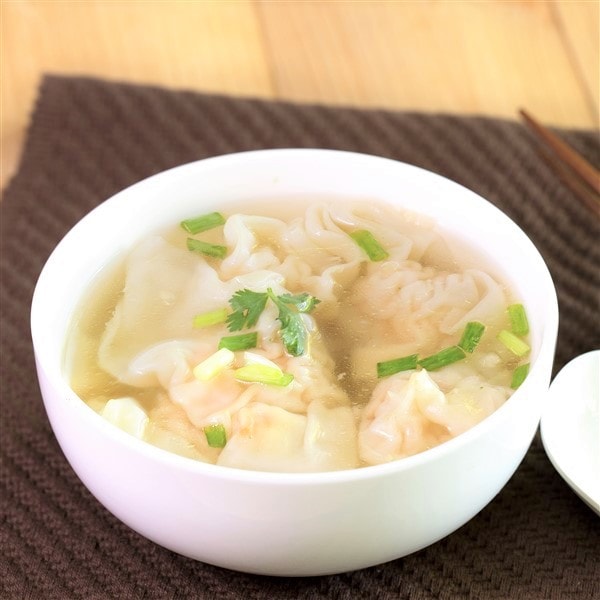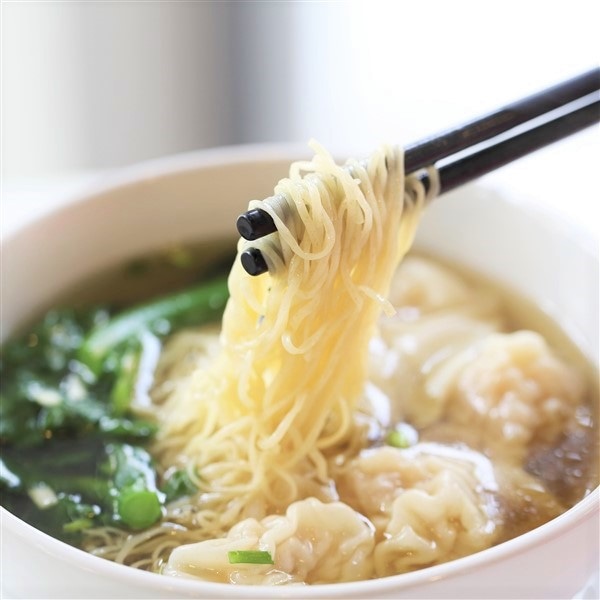Wonton
Wonton are one of the favorite local snacks of Cantonese people. Cantonese wonton are carefully made with thin skin and ample fillings that include pork, eggs, shrimp, and more.
In Guangdong, people often add wonton to noodles and soup to make wonton noodle soup. Wonton can also be served on their own. Wonton soup is made by boiling wonton, dried flounder, and shrimp. In Hong Kong, some restaurants place wonton in hot oil and fry them until they’re crispy and golden brown, and serve them as “fried wonton”. This method is very popular outside of China as well.
The First Wonton Noodle House
Known as “wonton” in Guangzhou, people in northern China call the food “huntun”. The dish is said to have come to Guangdong from Hunan during the Tang and Song dynasties. To find out when wonton noodles officially made it to Guangzhou, we have to go back to the rule of the Tongzhi Emperor during the Qing dynasty.
According to legend, at that time a man from Hunan opened the “Sanchu Noodle House” (Sanchu refers to the area that includes Hunan and Hubei) in Guangzhou, serving mainly noodle dishes, including wonton noodles. At the beginning, they were essentially just dumplings boiled in water. After several iterations, wonton came into their own by making a thin skin with eggs and flour, and using ground meat, shrimp, and garlic chives for the filling.

Cantonese people soon fell in love with wonton noodles, and business was booming at “Sanchu Noodle House”. Before long, many competitors tried to mimic the restaurant’s success. In the beginning, hawkers would walk around with poles on their shoulders selling bowls of wonton noodles, crying out and banging on bamboo clappers to attract customers. Soon enough, wonton noodles spread all over the city.
Mobile Wonton Stations
Wonton noodles, a traditional snack in Guangzhou, were originally sold by traveling hawkers who carried portable wonton stations on their shoulders, so the dish was also known as “mobile wonton”.
One side of this carrying pole station would be a container with a covered lamp on top with a seal written on it.
 To the side of this would be a plate of wonton filling, like fresh shrimp or pork. Under that was a cabinet with thin noodles and wonton skins. So this side of the pole was for half-finished product and a cabinet.
To the side of this would be a plate of wonton filling, like fresh shrimp or pork. Under that was a cabinet with thin noodles and wonton skins. So this side of the pole was for half-finished product and a cabinet.
The other side was used for making the wonton noodles. It had a copper barrel separated in the middle; one side was boiling water for the wonton noodles, and the other side was soup. Beneath this barrel was a wood stove. There was also a cask with fresh water in it used for cleaning utensils.


